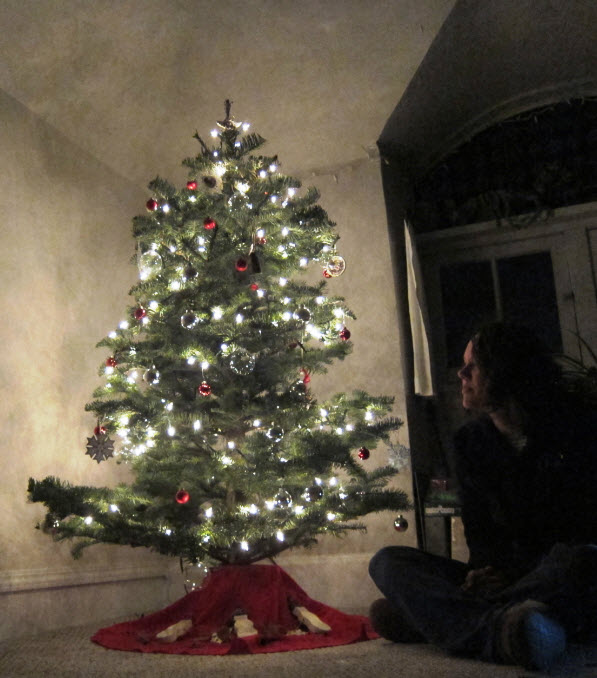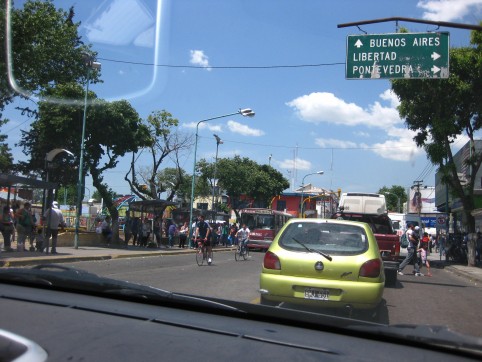
Lost in the chaotic back streets of Buenos Aires
Boy it’s been a whole month since I posted! We got back from Argentina a couple weeks ago, and I’ve been getting things back in order, plus relaxing and enjoying the Christmas season!
We had such a great time on our trip! There were many things we observed and made note of, and I’ve listed them here if anyone’s interested. Just observations about the country. There are more pictures after the text.
We* ended up driving almost 3,200 miles from Buenos Aires down the east coast to Peninsula Valdez where we saw penguins, then west through Patagonia (route 25) to the Andes, then through the Pampas back to Buenos Aires.
*I was the map-reader and in fact did precisely NONE of the driving; F. did it all, despite the insane drivers, complete lack of stop signs, and basically no road rules. I was so sure we were going to get into an accident, but amazingly we didn’t. My Hubby is such a good driver! Wow.
Argentina was NOT cheap like everyone had said, however. Prices for everything (even in places well off the beaten path) were comparable to the United States. The nature there was first-rate, however. Beautiful! We loved seeing different animals in the wild, including guanacos, rheas (like ostriches), flamingos, penguins, whales, parakeets, sea lions, tarantulas, an armadillo, a stork, vultures, cara-caras, vermillion fly catchers, etc.
Some Random Observations:
Argentina is very Italian (say “Ciao!”). It’s all about pasta, pizza, ham-n-cheese -everything, and croissants. We ate enough ham & cheese cold cuts and croissants to last us a lifetime.
This country consumes a LOT of sugar! It’s everywhere, and in everything. And they love their helado (ice cream) and dulce de leche (carmelized milk & sugar)!
They don’t seem to be much into fresh food or vegetables. Salads are a little bit of wilty lettuce topped with mountains of ham and cheese, topped with, strangely, distilled white vinegar and corn(!) or vegetable oil. Canned fruit was usually the thing, rather than fresh. I was consistently underwhelmed by the selection and quality of fresh produce — and none of it was organic that I saw.
Despite the perfect climate and rich soil, I only saw a handful of backyard gardens and a couple of backyard fruit trees. Why don’t people grow their own food?
The supermarkets are crammed with processed foods laden with sugar, preservatives, partially hydrogenated oils, and white flour, with seemingly no healthier alternatives.
Milk is mostly all ultrapasteurized, sold in aseptic bags or in boxes on the shelf. And I stocked up when I could find plain yogurt with no sugar added!
I didn’t see organic anything. The organic/local foods/whole foods/fresh foods/no-GMO thing hasn’t reached Argentina yet, it seems. They do have Gluten-Free down pat, though.
No health food stores… none that I saw anyway.
They drink a lot of mate (pronounced mah-tay), anywhere and everywhere, all the time, usually with friends, preferably outside, but also at work and in the car.
Spanish is spoken with an Italian accent. And the double L sound is pronounced “sh” rather than “y”. Calle (“street”) is pronounced “kah-shay” instead of “kah-yay.”
The driving is completely nuts, reckless, and downright scary, but people are generally paying attention and usually not on their cell phones.
The road signage throughout the country is minimal, confusing, and often just plain stupid.
There are no stop signs at intersections, lanes are optional, red lights are sometimes disregarded — as are pedestrians — and it’s very much a “me first” attitude. I’m still completely amazed that we weren’t involved in an accident.
That said, the people (when not in their cars) seemed really nice everywhere we went. We didn’t really run into the machismo attitude we’d read about, although perhaps that’s because we were traveling as a couple. I got a few wolf whistles but mostly I just noticed that the men were courteous in general, and held the door for me.
Seat belts, car seats, and helmets are seen only occasionally.
Buenos Aires has a Parisian look to it, but the buildings are dirty and run down, perhaps from the air pollution?; the city is much prettier at night when you can’t see the dirt!
We drank the water everywhere with no problem.
All gas stations are full service. All cars are manual transmission.
What they call “NAFTA” is the regular gasoline we’re used to in the States; it’s expensive at around US$4+ a gallon. GNC (compressed natural gas) is also widely available (and usually a quarter of the price as NAFTA), and many cars use that as fuel.
In general, Argentinians are thin, easy on the eyes, and casually fashionable. Most have European blood.
The traffic lights will turn yellow before they turn red, but also again before they turn green.
Waiters will let you linger at a restaurant as long as you want; if you want the check, you’ll have to ask for it. The strange “table fee” added to your bill is for the bread, use of the table, clean silverware & plates, etc. It’s not the tip. It’s customary to tip at least 10% at a restaurant.
Police stations are in every town, no matter how small. There are lots of police “checkpoints” (though they seemed pretty laid-back).
Lots of toll roads, especially around Buenos Aires.
In Argentina they like to nickel and dime you for everything; however, parking was free, even at the beach!
No smoke detectors in hotel rooms.
Lots of cows eating lush, green grass. Famous grass-fed beef. However, they’re just getting into the feedlot-factory-farming thing — cringe!
Seemingly no emissions regulations on vehicles. The air is downright acrid in Buenos Aires.
Lots of dirty, run-down, soviet-style apartment blocks. Dead, soviet-looking building carcasses litter the landscape; too decrepit to resurrect, no money to tear them down.
The feel of the whole country is “not enough money.” This is thanks to their recent, turbulent political history.
Prices ARE NOT CHEAP! We read so many things that said “Argentina is cheap.” Well, Argentina is NOT cheap. Even in the small towns that are off the beaten path. Its prices are absolutely comparable to the US, except for electronics which are outdated and yet cost twice what they cost in the US. Jobs are evidently hard to come by, and people don’t make much money. We honestly don’t know how they survive. Thus, the look of “poor” throughout the country.
Siesta is every afternoon. Stores close for about four hours and then re-open later in the evening. They still put in a 40-hour work week though.
Argentinians are night owls; they eat late and stay up very late.
Dogs run free. There are dogs everywhere, napping on sidewalks, crossing streets, playing in groups, just “out and about.” Some are stray, some aren’t; all look happy!
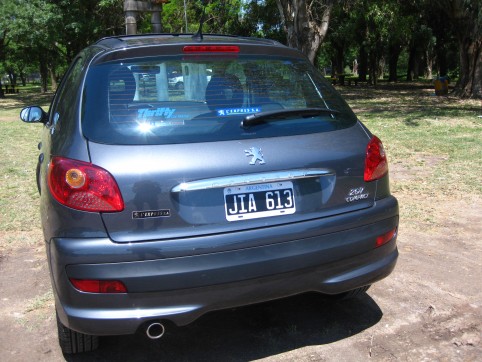
Our Peugeot rental car
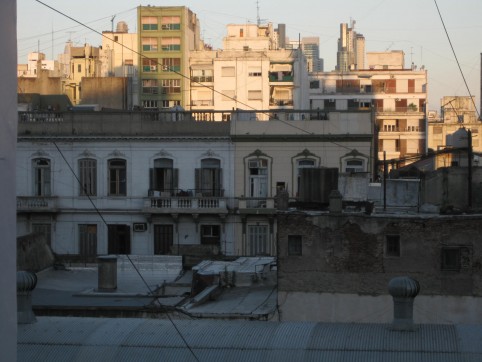
Somewhere in Buenos Aires

Mar del Plata
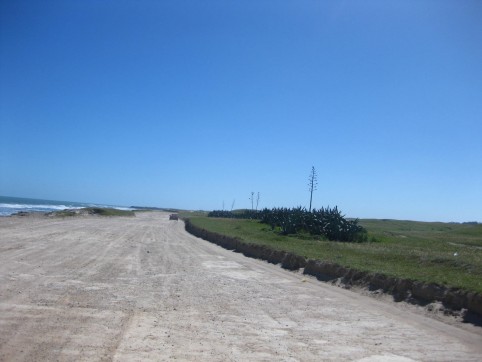
Driving along the beach, south of Mar del Plata (?)
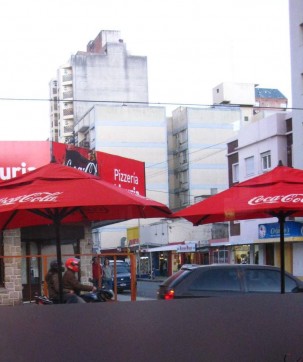
Ubiquitous dirty apartment blocks -- these are in not-so-scenic Necochea
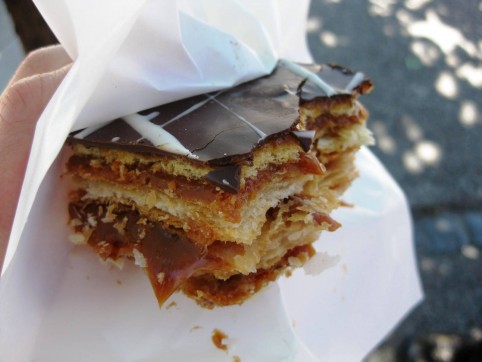
Pastry with dulce de leche -- the best deal in Argentina at only US$1
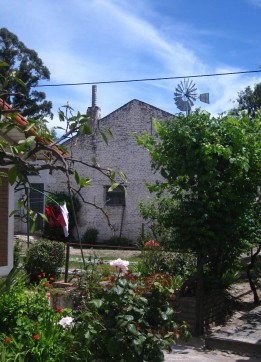
Someone's backyard behind the gas station. Can't remember where...
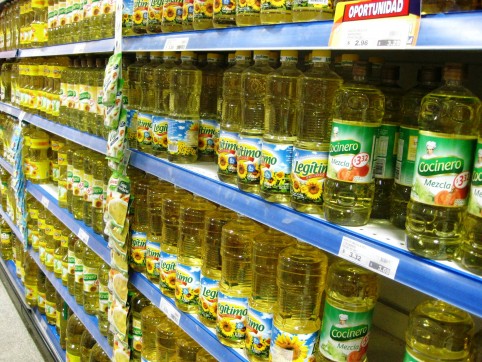
Every store had an entire aisle devoted to cheap vegetable oils. Only 75 cents US for a bottle. Not your thing? Then try the blocks of margarine in the refridgerated section!
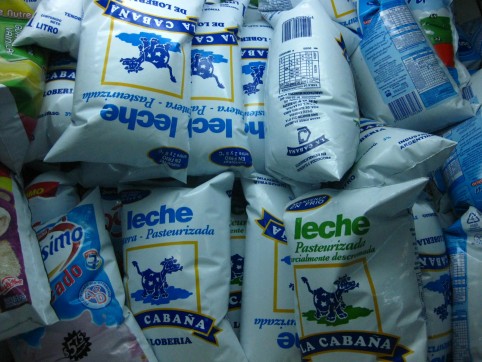
Milk is sold in bags. Almost all of it ultrapasteurized; pasteurized (like the stuff above) is rare.
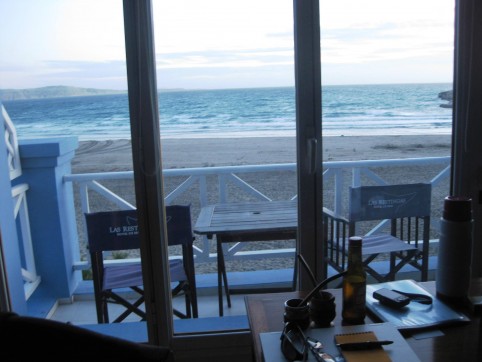
We stayed in Puerto Pyramides on Peninsula Valdez. I particularly loved this leg of our trip. Our room was right on the beach and we watched whales from our balcony!

We saw lots of sweet penguins at Peninsula Valdez!! Gorgeous water, too. (And very, very windy!)
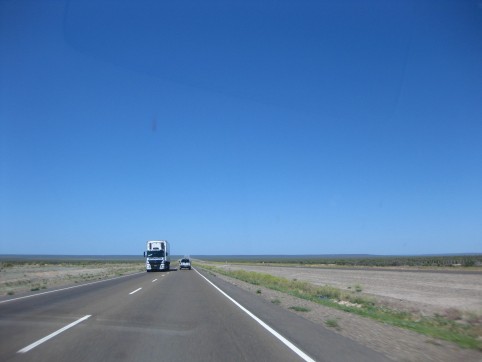
Patagonia does feature a lot of nothing.
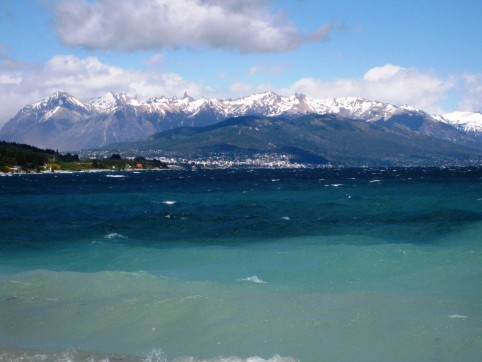
In the Andes, with Bariloche in the distance. It was SO windy! And the water really is that beautiful color.
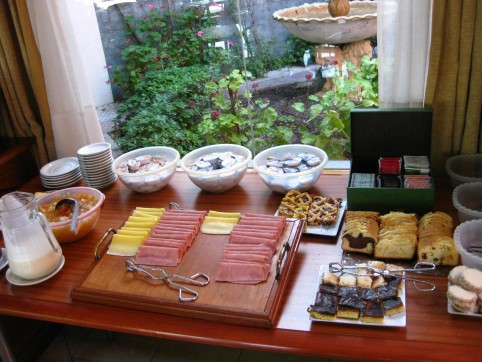
Typical Argentinian hotel buffet breakfast. Ham & cheese, croissants (not pictured), canned fruit, sweetened drinkable yogurt, breads, and sugary pastries filled with dulce de leche.
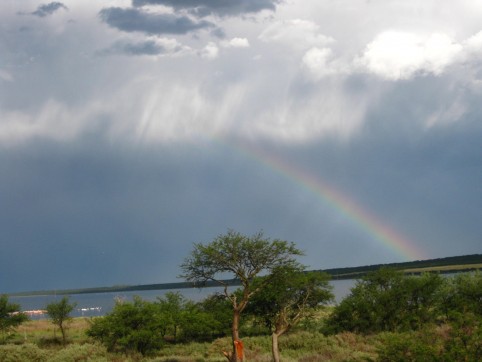
The Pampas sometimes looked like the grassland prairie of the American midwest, while in other places (like here near Santa Rosa) it looked like the African savanna with lots of Acacia. (And notice the flamingos in the water in the bottom left hand corner of the picture!)

Old gas station with Che Guevara posters in the city of Chivilcoy.
